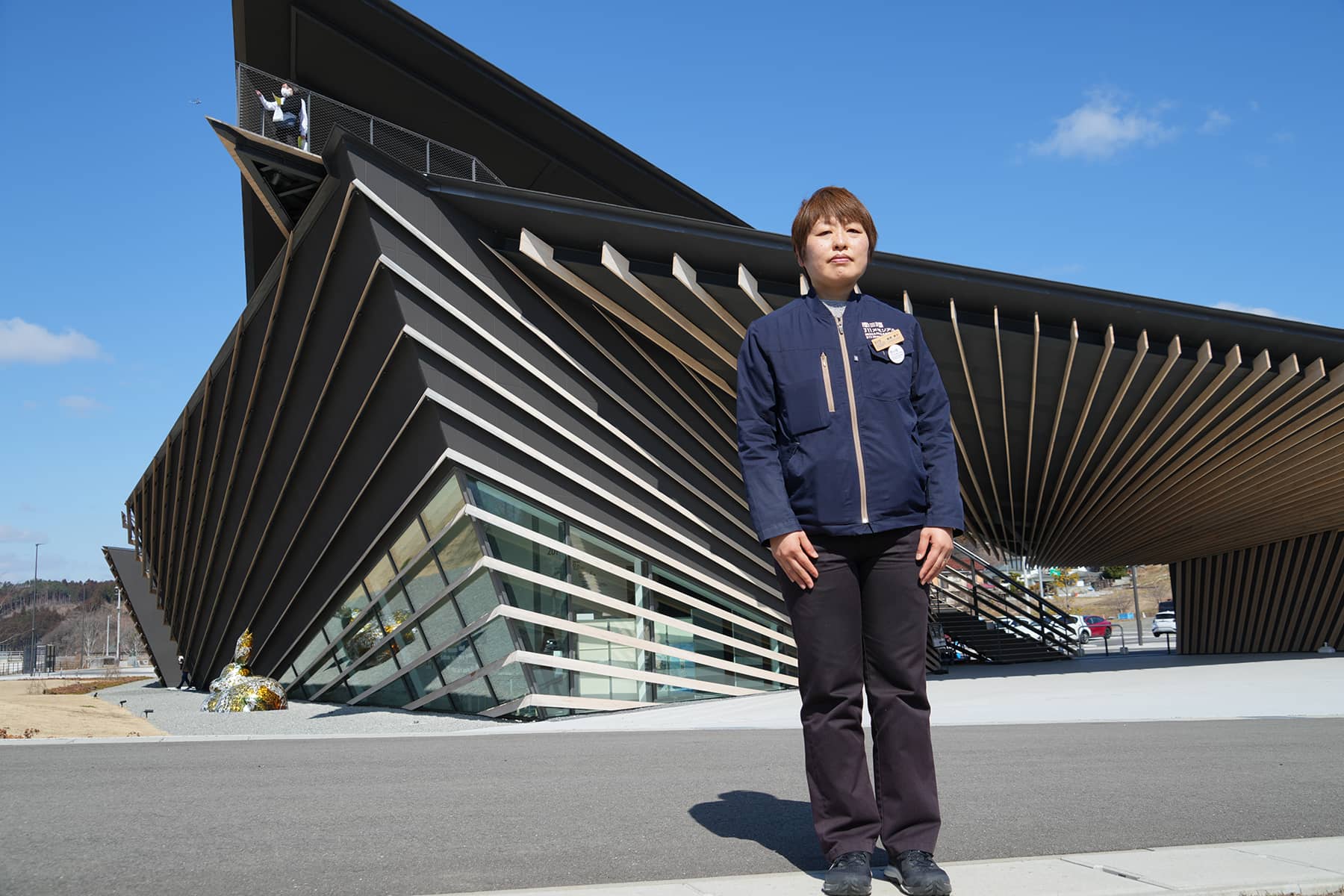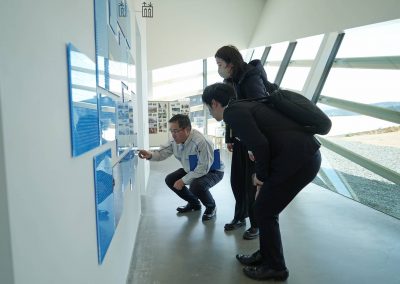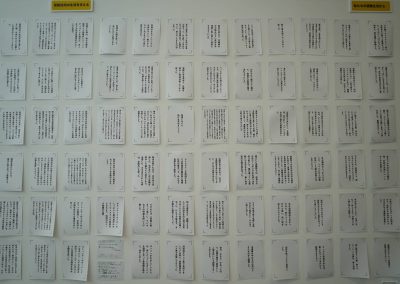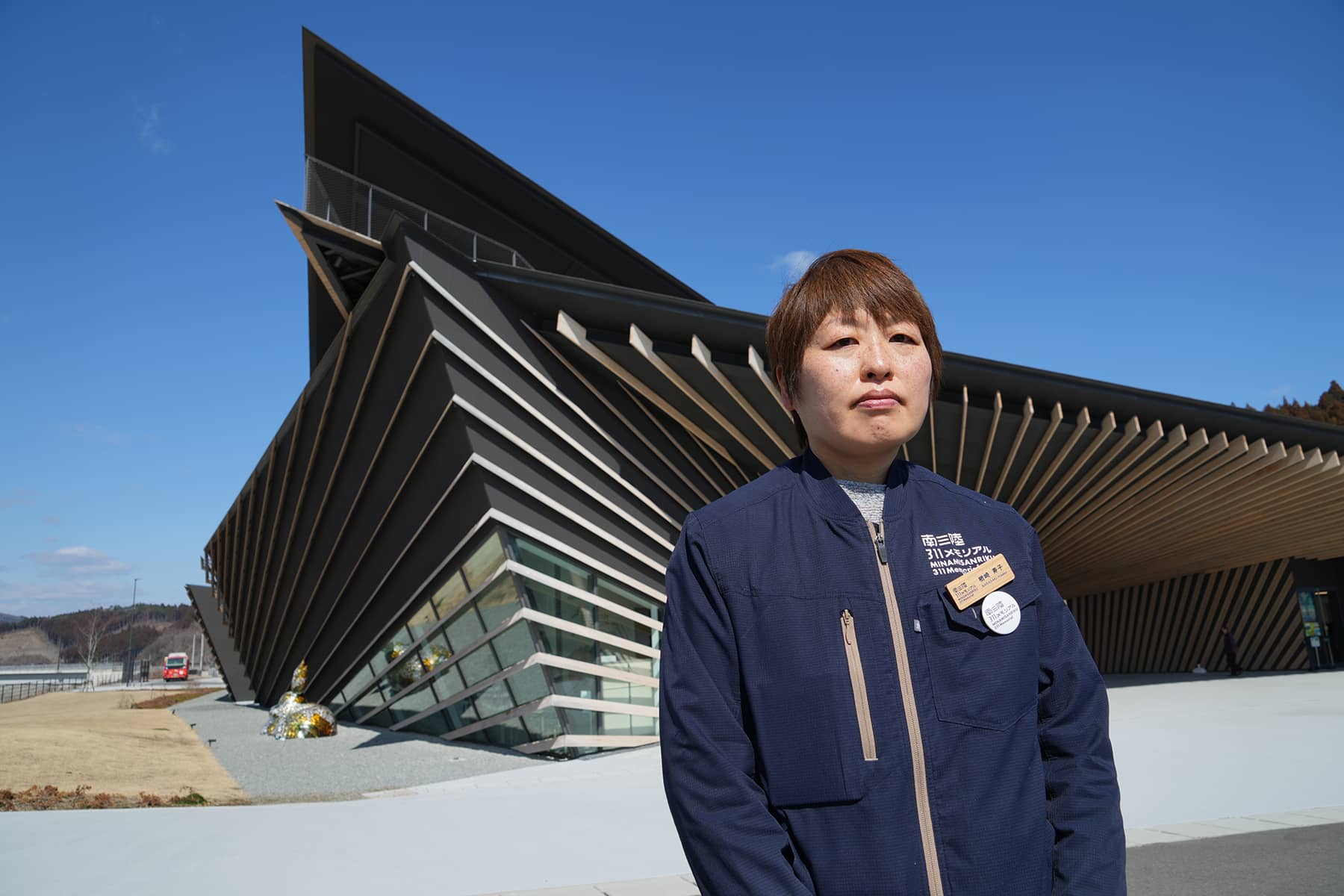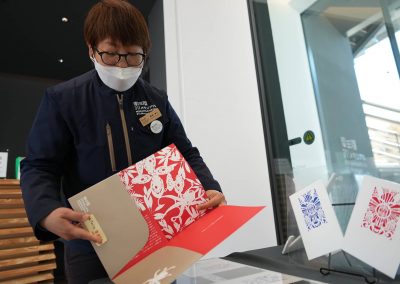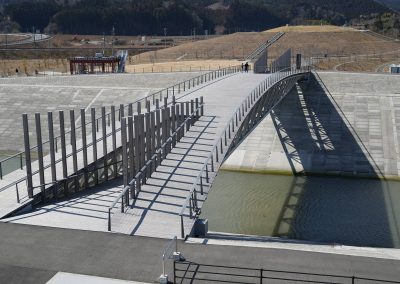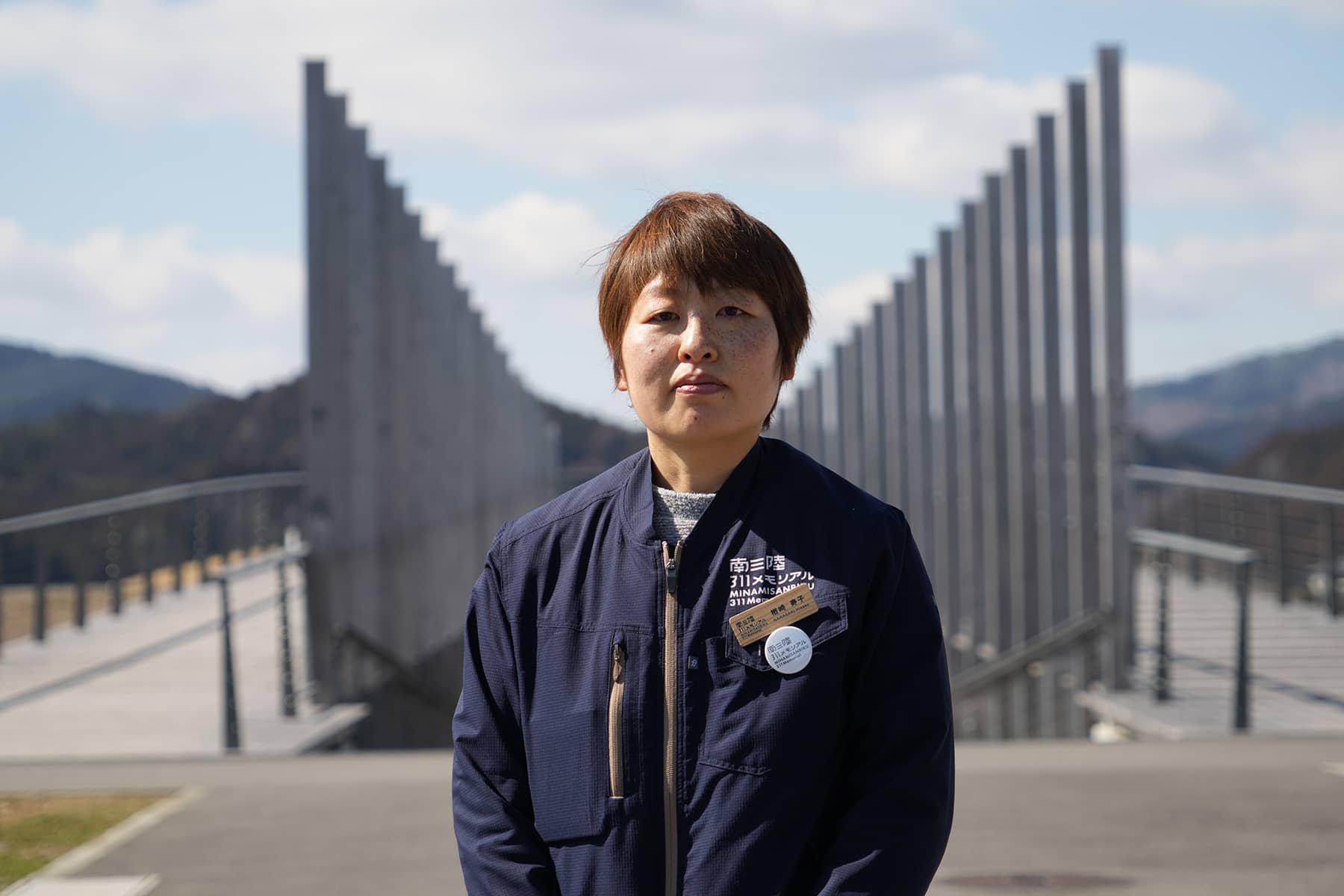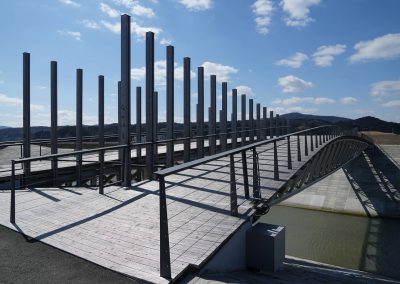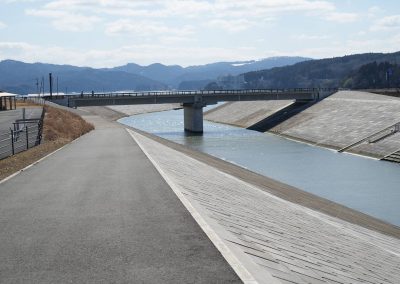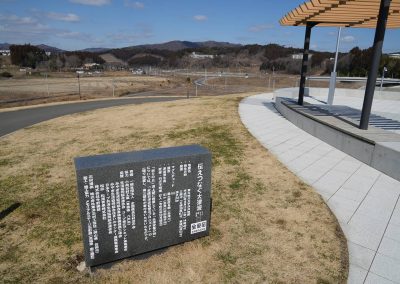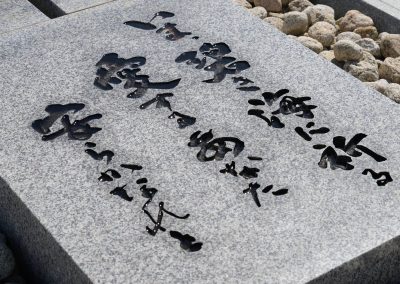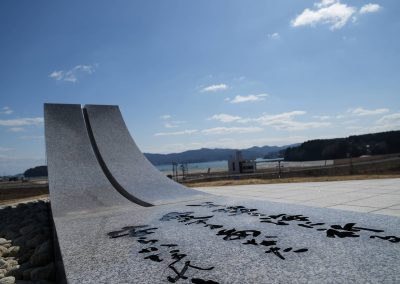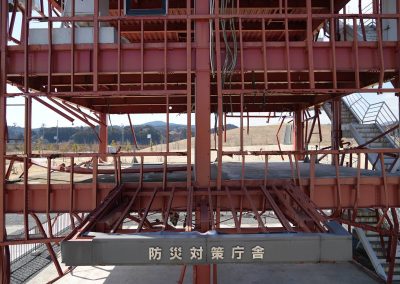
To honor the lives lost in the multiple March 11, 2011 tragedies and help protect people from future natural disasters, the coastal town of Minamisanriku in Miyagi Prefecture opened a memorial museum in October 2022.
Left deeply scarred by the tsunami, Minamisanriku is one of many cities that have begun preserving the individual memories of the disaster. The Great East Japan Earthquake Memorial Facility, known as the Minamisanriku 311 Memorial, also bears witness to efforts by the community to rebuild from the devastating twin punches of the 2011 earthquake and tsunami.
Standing against the backdrop of Sanriku’s lush cedar forests, the site was designed by Kengo Kuma, the renowned architect behind Tokyo’s National Stadium, to visually connect with the land and its people. Kuma’s design is more than just an architectural marvel it is a homage to a community’s strength and perseverance.
Hisako Narasaki, the Museum Project Manager and Disaster Prevention Officer, shared insights into the unique approach of the memorial when Milwaukee Independent visited the facility in March.
“Unlike conventional museums, the Minamisanriku 311 Memorial offers a reflective journey, prompting visitors to consider their reactions in the face of disaster,” said Narasaki. “Another difference is that instead of learning from exhibits, visitors are asked what they would do if an earthquake actually occurred, based on the recorded testimonies from surviving Minamisanriku residents.”
The facility is a commemorative space, but additionally serves as a spiritual center for the townspeople. Narasaki said it was a place of learning and reflection, where the stories of past tsunamis and the Great East Japan Earthquake were shared to highlight the extraordinary scale of the 2011 disaster.
“This narrative continuity ensures that the memories and lessons from that day are preserved for future generations,” said Narasaki. “The Minamisanriku 311 Memorial also plays a role in fostering solidarity and support for other communities affected by natural disasters. Following a major earthquake in Noto in January 2024, visitors to the memorial penned messages of encouragement for Noto’s residents, demonstrating a shared understanding and empathy between communities similarly scarred by nature’s unpredictability.”
“I was in Noto several years ago as a photographer. I wish you to have a speedy recovery and much good luck in the future. All my very best.” – Ellen Kaplowitz
Photographs taken by Masashi Asada, that capture the spirit and resilience of Minamisanriku residents, adorn the walls of the memorial. These images, a result of years of collaboration between Asada and the local community, offer a rare and intimate glimpse into the lives touched by the disaster.
Despite the architectural grandeur and the attention it attracts, Narasaki had a contemplative perspective regarding the memorial’s impact on the local community and the practical challenges of maintaining such a significant facility.
“Sometimes I wonder if we really need a luxurious hall by a famous architect in such a rural area. High ceilings are hard to maintain. We can’t change a single light bulb by ourselves, and heating costs are high,” she said.
Narasaki said that the memorial museum was grateful to the global community, acknowledging the support received from organizations worldwide. Those gestures of support showed the universal bond of humanity in the face of adversity.
Just south of the memorial museum is another witness to 2011.3.11 / 14:46. Its story that is both ironic and tragic.
The Minamisanriku Disaster Prevention Building was constructed in 1995 as part of the Shizugawa town administration buildings. The structure was designed to be a bastion of safety against the relentless forces of the Pacific. Located approximately 2,000 feet from the coast and at a height of 40 feet, the building symbolized a community’s commitment to safeguarding its citizens.
However, the undersea earthquake triggered a devastating tsunami and unleashed waves that obliterated vast swathes of the Tohoku region. The Disaster Prevention Building, despite its robust construction and strategic location, was overwhelmed by the tsunami, which reached heights of up to 50 feet in some areas, far exceeding initial predictions of a maximum 20 foot wave height.
The tragedy that unfolded was emblematic of the broader disaster that struck Japan that day. Yet stories of heroism and sacrifice emerged. Notably, a young employee named Miki Endo used the building’s emergency broadcast system to tirelessly urge residents to seek higher ground until the very end. The final moments of her broadcast were recorded of her pleading with residents to evacuate. Endo’s actions were recognized posthumously and incorporated into moral education materials for public schools in Saitama Prefecture in 2012, highlighting her bravery.
The aftermath of the disaster saw the ruined building stand as a painful reminder of the day’s events. While the physical structure was largely destroyed, the foundation and part of the framework remained, sparking a debate within the community and beyond regarding its future of either preservation or demolition. The dilemma has continued over the years, following a series of discussions and consultations within the community and various stakeholders, with no resolution yet finalized.
After the massive earthquake of magnitude 9.0 Japan, it unleashed a devastating tsunami that resonated across the Pacific Ocean and reached the distant shores of Chile. The first waves hit the Chilean coast 21 hours later, traversing an incredible distance of over 10,600 miles from Sendai to Dichato, Chile.
The seismic event underscored not only the destructive power of nature but also the deep, intercontinental connections forged in the aftermath of such disasters.
The tsunami’s economic impact on Chile was profound, particularly for its scallop industry. Waves strong enough to displace concrete blocks that weighed tons caused significant damage to the local shellfish farms.
Historically, Chile and Japan share a bond shaped by the forces of nature. That relationship dated back to the 1960 Valdivia earthquake in Chile, which triggered a tsunami that crossed the Pacific and caused extensive damage in Shizugawa – now Minamisanriku, Japan.
In a gesture of solidarity and remembrance, a bilingual Spanish-Japanese plaque and a replica Moai statue were installed in Minamisanriku to commemorate the 30th anniversary of the disaster in 1990, symbolizing the friendship and shared resilience between the two nations.
The ties were further strengthened in the wake of the 2011 Tōhoku tsunami. The original Moai statue, sent from Chile as a symbol of recovery and friendship, suffered damage during the disaster, with its head being washed away.
Moved by the symbolism of the Moai and the plight of Minamisanriku, Chile responded with another gesture of friendship. In 2013, a new Moai statue, crafted by sculptors from Easter Island, was presented to the town, embodying hope and the continuation of the deep-rooted connection between the two communities.
The “Moai ~ Living in the Future” project, initiated by students from Shizugawa High School, further showcased the statues as symbols of revival and disaster prevention. The project, which began before the earthquake as a means to revitalize the town and raise disaster awareness, gained new significance in its aftermath.
Efforts by the students to use the Moai as a symbol of reconstruction also resonated with the people of Chile.
Though separated by vast oceans, the efforts showed that communities could come together to support one another in times of need, transforming the scars left by natural disasters into enduring symbols of hope and friendship.
3.11 Exploring Fukushima
- Journey to Japan: A photojournalist’s diary from the ruins of Tōhoku 13 years later
- Timeline of Tragedy: A look back at the long struggle since Fukushima's 2011 triple disaster
- New Year's Aftershock: Memories of Fukushima fuels concern for recovery in Noto Peninsula
- Lessons for future generations: Memorial Museum in Futaba marks 13 years since 3.11 Disaster
- In Silence and Solidarity: Japan Remembers the thousands lost to earthquake and tsunami in 2011
- Fukushima's Legacy: Condition of melted nuclear reactors still unclear 13 years after disaster
- Seafood Safety: Profits surge as Japanese consumers rally behind Fukushima's fishing industry
- Radioactive Waste: IAEA confirms water discharge from ruined nuclear plant meets safety standards
- Technical Hurdles for TEPCO: Critics question 2051 deadline for decommissioning Fukushima
- In the shadow of silence: Exploring Fukushima's abandoned lands that remain frozen in time
- Spiral Staircase of Life: Tōhoku museums preserve echoes of March 11 for future generations
- Retracing Our Steps: A review of the project that documented nuclear refugees returning home
- Noriko Abe: Continuing a family legacy of hospitality to guide Minamisanriku's recovery
- Voices of Kataribe: Storytellers share personal accounts of earthquake and tsunami in Tōhoku
- Moai of Minamisanriku: How a bond with Chile forged a learning hub for disaster preparedness
- Focus on the Future: Futaba Project aims to rebuild dreams and repopulate its community
- Junko Yagi: Pioneering a grassroots revival of local businesses in rural Onagawa
- Diving into darkness: The story of Yasuo Takamatsu's search for his missing wife
- Solace and Sake: Chūson-ji Temple and Sekinoichi Shuzo share centuries of tradition in Iwate
- Heartbeat of Miyagi: Community center offers space to engage with Sendai's unyielding spirit
- Unseen Scars: Survivors in Tōhoku reflect on more than a decade of trauma, recovery, and hope
- Running into history: The day Milwaukee Independent stumbled upon a marathon in Tokyo
- Roman Kashpur: Ukrainian war hero conquers Tokyo Marathon 2024 with prosthetic leg
- From Rails to Roads: BRT offers flexible transit solutions for disaster-struck communities
- From Snow to Sakura: Japan’s cherry blossom season feels economic impact of climate change
- Potholes on the Manga Road: Ishinomaki and Kamakura navigate the challenges of anime tourism
- The Ako Incident: Honoring the 47 Ronin’s legendary samurai loyalty at Sengakuji Temple
- "Shōgun" Reimagined: Ambitious TV series updates epic historical drama about feudal Japan
- Enchanting Hollywood: Japanese cinema celebrates Oscar wins by Hayao Miyazaki and Godzilla
- Toxic Tourists: Geisha District in Kyoto cracks down on over-zealous visitors with new rules
- Medieval Healing: "The Tale of Genji" offers insight into mysteries of Japanese medicine
- Aesthetic of Wabi-Sabi: Finding beauty and harmony in the unfinished and imperfect
- Riken Yamamoto: Japanese architect wins Pritzker Prize for community-centric designs
MI Staff (Japan)
Lее Mаtz
3.11 Exploring Fukushima: The Tōhoku region of Japan experienced one of the worst natural disasters ever recorded when a powerful earthquake was followed by a massive tsunami, and triggered an unprecedented nuclear crisis in 2011. With a personal connection to the tragedies, Milwaukee Independent returned for the first time in 13 years to attend events commemorating the March 11 anniversary. The purpose of the journalism project included interviews with survivors about their challenges over the past decade, reviews of rebuilt cities that had been washed away by the ocean, and visits to newly opened areas that had been left barren by radiation. This special editorial series offers a detailed look at a situation that will continue to have a daily global impact for generations. mkeind.com/exploringfukushima






